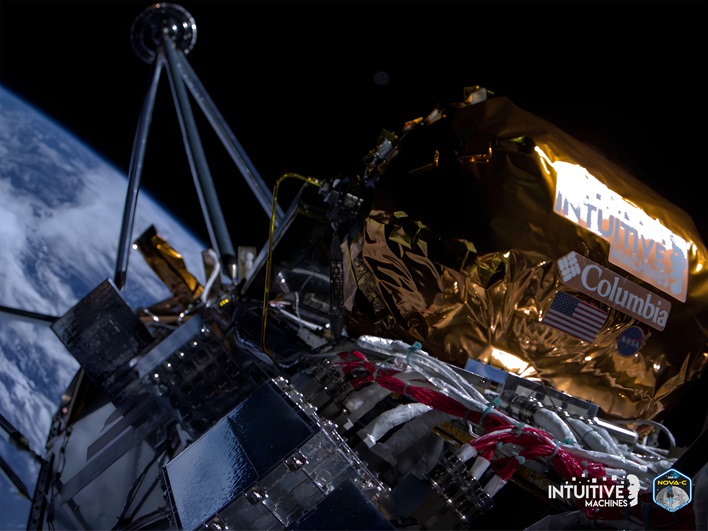Intuitive Machines Moon Lander Transmits Its First Awesome Images From Space

Following a delay in launch that arose due to off-nominal methane temperatures on February 13th, the IM-1 mission carrying the lunar lander and its payload successfully lifted off two days later aboard a SpaceX Falcon 9 rocket. The Nova-C class lunar lander then established a stable altitude, solar charging, and radio communications contact with Intuitive Machines’ mission operations center in Houston, Texas. On February 16th, the IM-1 mission sent back a set of exceptional images that were captured shortly after separation from SpaceX’s second stage, and were subsequently shared by Intuitive Machines on its X/Twitter account.
On the same day the images were being transmitted back to Earth, flight controllers reported successfully firing the first liquid methane and liquid oxygen engine in space, thus completing the IM-1 mission engine commissioning. The company remarked that this engine firing “included a full thrust mainstage engine burn and throttle down-profile necessary to land on the Moon.”
“As we prepare to embark on our IM-1 mission to the Moon, we carry with us the collective spirt of perseverance, fueled by the dedication and hard work of everyone on our team,” remarked Intuitive Machines President and CEO Steve Altemus shortly before launch. “Their tireless efforts have brought us to this moment, where we stand on the precipice of history, humbled by the gravity of our mission, yet emboldened by the boundless possibilities that lie ahead.”

The IM-1 mission has already been more successful than Astrobotics' Peregrine lander mission, which was the first launch from the United States since 1972 with the purpose of landing a spacecraft on the moon’s surface. Shortly after launch, an anomaly occurred which prevented the team from being able to achieve a stable-sun pointing orientation, and ultimately ended with the spacecraft re-entering the Earth’s atmosphere somewhere over the Indian Ocean.
While the mission has been successful up to this point, the hardest part is still yet to come. That part is successfully landing Odysseus on the lunar surface. The IM-1 mission also includes science and technology payloads as part of NASA’s Commercial Lunar Payload Services (CLPS) initiative, which the space agency says is a key part to the upcoming Artemis lunar exploration efforts.
The last public report given from Intuitive Machines stated the Nova-C class lunar lander remains in “excellent health,” and continues to have a stable orientation, while remaining on schedule for a lunar landing opportunity on the afternoon of February 22, 2024.


